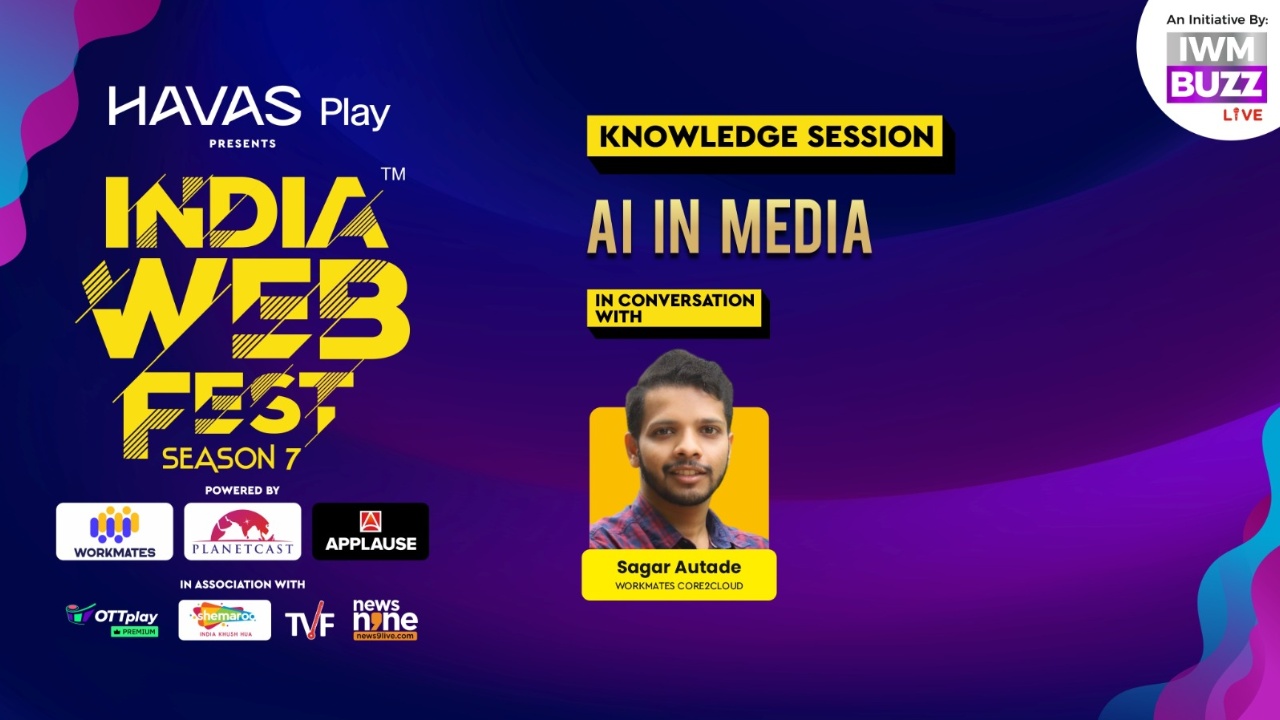We rarely notice revolutions when they begin. Not the real ones, anyway. Often, they arrive disguised as helpful tools, subtle conveniences, or smarter ways of doing the same old things. And we get slid towards it, without realising. That is how Artificial Intelligence got us on its team.
It’s not about the rise of robots or machines replacing creatives in smoky writers’ rooms. It’s something far more nuanced—the steady infusion of intelligence, built into the very fabric of how stories are crafted, polished, delivered, and received. Artificial Intelligence, especially in its generative form, is not rewriting the rules of media. It’s helping storytellers bend them with more freedom, speed, and precision.
Sagar Autade, a Cloud Solutions Architect at Workmates Core2Cloud, frames this transformation not as a tech triumph but as a creative liberation. His perspective is refreshingly grounded, not in buzzwords, but in what actually moves the industry forward. AI, he suggests, is not some future frontier. It’s here, embedded in workflows, quietly enhancing everything from scripting and voiceovers to marketing and monetization.
Think about this. What used to take a team of editors, multiple rounds of revisions, and days of production can now be shaped, tested, and finalized in hours. Alternate endings to a script? Done. Regional dubbing with lip-sync and emotion intact? Seamlessly handled. Real-time sentiment feedback from a global audience? Instantly visible on dashboards, ready to inform the next creative or strategic move.
And it doesn’t stop at content creation. AI is dramatically altering how audiences experience media. No two viewers on an OTT platform watch the same version of a homepage anymore. AI powered engines learn, adapt and curate in the background. They will bring viewers not only content, but their content. Advertising which was once a blunt force axe, has become a surgical instrument. AI has given time targeted ads, but relevant enough to disrupt the user’s understanding less than it would traditionally.
Localization, which was always a logistical nightmare, is now scalable at a very deep and authentic level. In a place like India, where dialects and expressions change every few hundred kilometers, it matters. AI will not simply translate; it will change the tone, sync the expressions and change the content that makes it feel local, not just understood but felt.
There is infrastructure behind all this magic. Cloud infrastructure to be precise. Cloud infrastructure that not only makes technology feasible but better. Workmates Go To Cloud, an AWS Premier Partner, has a history of providing scalable, enterprise-grade, cloud and AI technologies for over 350 clients across many sectors. They are not just technically capable. They are contextually capable. Their systems are designed for more than just use. They’re designed to evolve. They work within the complexities of hybrid cloud environments, adhere to strict data governance, and adapt to real-world constraints like cost, compliance, and legacy systems.
This, in essence, is the future of media: agile, intelligent, inclusive, and deeply personalized. But also—and this cannot be overstated—human at its core. AI is not replacing creators. It’s removing the friction between imagination and execution. It’s giving directors the freedom to test bold ideas without burning through budgets. It’s allowing journalists to focus on truth-telling while automation handles formatting and publishing. It’s enabling marketers to listen more closely and respond more meaningfully.
What’s happening isn’t a revolution in the loud, disruptive sense. It’s more like an awakening. An awareness that the tools we’ve built can now build alongside us. That the old boundaries between languages, between formats, between data and intuition, are no longer as fixed as we thought.
So yes, the industry is changing. But not because it has to. Because now, it can. And for those daring enough to adopt this shift, to see AI not as a menace but as a collaborator, the potentials are not just exciting. They’re inevitable.
Because in the end, storytelling isn’t always about who or what supplies the message, provided a human intervention and supervision, however. It’s about how deeply it unites. And if intelligence, both artificial and human, can help narratives travel further, hit harder, and land more soothing, then maybe this isn’t a tech story after all.
Maybe it’s just a better way to tell the old ones.

